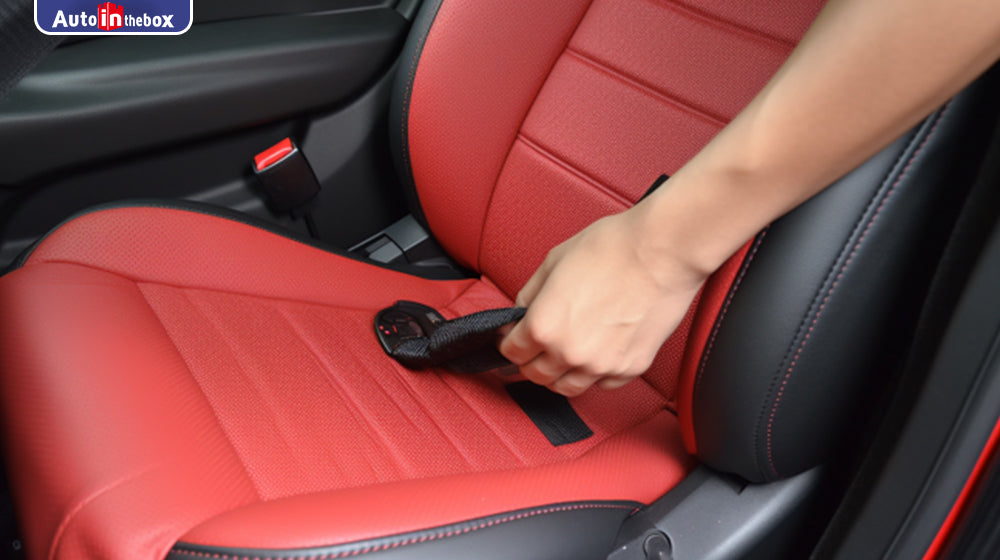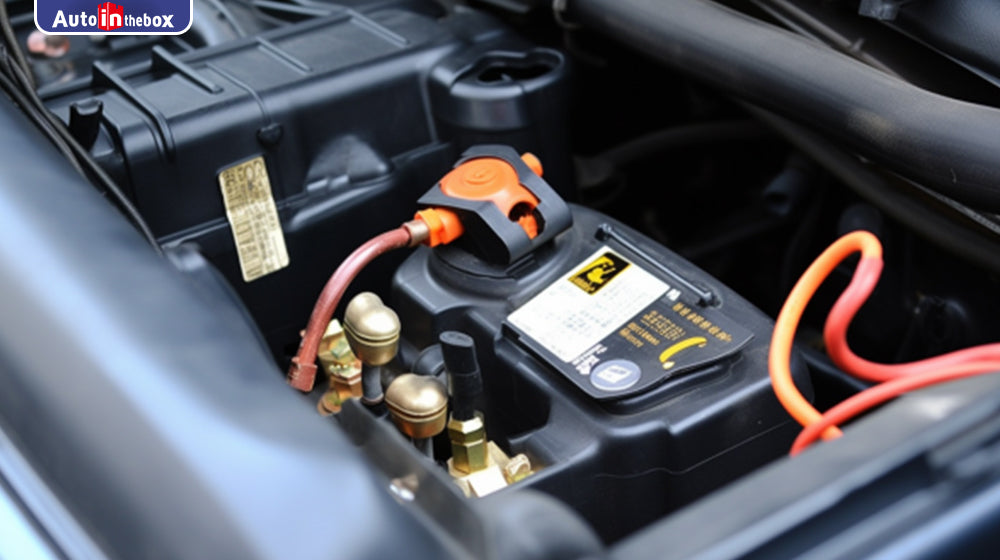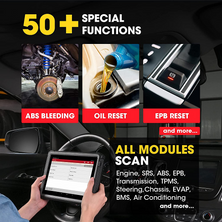
When seat adjustments are loose, how to deal with it?
When seat adjustments are loose, the mechanisms responsible for adjusting the position are not securely fastened. This can result in the seat moving or wobbling while driving, which can be uncomfortable and potentially unsafe. To address this issue, it is essential to identify the cause of the looseness, such as loose bolts, damaged adjustment mechanisms, or rusted seat tracks. Once the cause is determined, appropriate measures such as tightening the bolts or fixing/replacing the damaged components can be taken. Seeking professional help or using seat repair kits may also be necessary, depending on the severity of the issue. Regular maintenance and inspections of seat adjustments can help prevent such problems in the future.
Recommended 2023 top car diagnostic tool:Launch X431V+,Launch pros v,Launch pro5,Launch IMMO elite,Launch PADVII
It's essential to identify the specific cause of the loose seat adjustment to determine the appropriate steps for repair or maintenance.
It's important to note that the specific repair measures may vary depending on the vehicle type and seat design. Before proceeding with any repairs, it is recommended to refer to the relevant vehicle repair manual or consult professional technicians for guidance.
Regular maintenance: Follow the manufacturer's recommended maintenance schedule for your vehicle, which may include specific instructions for inspecting and lubricating seat adjustment mechanisms. Regular maintenance can help identify and address any potential issues before they worsen.
Proper installation: When installing or reassembling seat adjustment mechanisms, ensure all components are correctly aligned and securely fastened. Follow the manufacturer's instructions and torque specifications to ensure proper installation.
Avoid excessive force: Be mindful of the pressure when adjusting the seat. Avoid excessive pulling, pushing, or rocking motions that could strain the adjustment mechanisms unnecessarily.
Minimize exposure to moisture and extreme conditions: Moisture and extreme temperature conditions can accelerate rust and corrosion, leading to the loosening of seat adjustments. Please park your vehicle in a covered area and protect it from excessive moisture or extreme heat/cold whenever possible.
Periodic inspections:
Regularly check the seat adjustment mechanisms for signs of looseness, wear, or damage.
Pay attention to any unusual sounds or movements while adjusting the seat.
If any issues are identified, address them promptly to prevent further deterioration.
Gentle use: Encourage passengers to handle the seat adjustments and avoid unnecessary rough handling carefully. This can help prolong the lifespan of the seat adjustment mechanisms.
By implementing these preventive measures, you can minimize the likelihood of seat adjustments becoming loose and ensure a safe and comfortable seating experience in your vehicle.
By providing comprehensive support, vehicle manufacturers can ensure customer satisfaction and address loose seat adjustment concerns effectively.
Properly functioning and adjusted seats are vital for occupant comfort, safety, and overall driving experience. Regular inspection and maintenance of seat adjustments should be prioritized to address any issues promptly and ensure a safe and comfortable driving environment.
Recommended 2023 top car diagnostic tool:Launch X431V+,Launch pros v,Launch pro5,Launch IMMO elite,Launch PADVII
There can be several reasons why seat adjustments are loose:
- Wear and tear: Over time, the constant use of seat adjustment mechanisms can cause them to become loose. Repeated movements and pressure can loosen the bolts or other fastening components.
- Loose bolts: The bolts that hold the seat adjustment mechanisms in place may gradually become loose due to vibrations or inadequate tightening during assembly. This can result in the seat becoming unstable and unsafe.
- Damaged components: The seat adjustment mechanisms themselves can become damaged, such as the levers, gears, or tracks. This damage can lead to a lack of proper engagement, causing the seat to move or not lock into position securely.
- Rust or corrosion: If the seat tracks or other metal components of the seat adjustment system are exposed to moisture or extreme conditions, they may develop rust or corrosion. This can weaken the structural integrity of the members, causing them to become loose or malfunction.
- Improper installation: In some cases, the seat adjustment mechanisms may have needed to have been adequately installed during manufacturing or previous repairs. This can result in insufficient fastening, leading to loose seat adjustments.
It's essential to identify the specific cause of the loose seat adjustment to determine the appropriate steps for repair or maintenance.
Preliminary repair measures for loose seat adjustments:
- Tighten the bolts: Check the bolts and fastening components that secure the seat adjustment mechanisms. Use appropriate tools to tighten them, ensuring they are drawn to the recommended torque specification.
- Lubrication: Apply lubricant to the seat tracks and other moving parts of the seat adjustment system. This can reduce friction and improve the smoothness of the adjustments.
- Inspect for damage: Carefully examine the seat adjustment mechanisms for visible damage or wear. If any components are damaged, they may need to be repaired or replaced.
Further repair measures for loose seat adjustments:
- Replacement of damaged components: If the seat adjustment mechanisms are severely damaged or cannot be repaired, replacing the damaged components may be necessary. Contact the vehicle manufacturer or dealer to obtain the correct replacement parts.
- Seat repair kits: Some automotive accessories offer seat repair kits to fix common seat looseness issues. These kits often include replacement parts, tools, and instructional manuals for repairing seat adjustments.
- Professional assistance: If the above measures are insufficient or if you are unfamiliar with seat repair work, it is advisable to seek professional help. Visit an auto repair shop or consult experienced technicians for proper diagnosis and repair.
It's important to note that the specific repair measures may vary depending on the vehicle type and seat design. Before proceeding with any repairs, it is recommended to refer to the relevant vehicle repair manual or consult professional technicians for guidance.
Preventive measures for loose seat adjustments:
Regular maintenance: Follow the manufacturer's recommended maintenance schedule for your vehicle, which may include specific instructions for inspecting and lubricating seat adjustment mechanisms. Regular maintenance can help identify and address any potential issues before they worsen.
Proper installation: When installing or reassembling seat adjustment mechanisms, ensure all components are correctly aligned and securely fastened. Follow the manufacturer's instructions and torque specifications to ensure proper installation.
Avoid excessive force: Be mindful of the pressure when adjusting the seat. Avoid excessive pulling, pushing, or rocking motions that could strain the adjustment mechanisms unnecessarily.
Minimize exposure to moisture and extreme conditions: Moisture and extreme temperature conditions can accelerate rust and corrosion, leading to the loosening of seat adjustments. Please park your vehicle in a covered area and protect it from excessive moisture or extreme heat/cold whenever possible.
Periodic inspections:
Regularly check the seat adjustment mechanisms for signs of looseness, wear, or damage.
Pay attention to any unusual sounds or movements while adjusting the seat.
If any issues are identified, address them promptly to prevent further deterioration.
Gentle use: Encourage passengers to handle the seat adjustments and avoid unnecessary rough handling carefully. This can help prolong the lifespan of the seat adjustment mechanisms.
By implementing these preventive measures, you can minimize the likelihood of seat adjustments becoming loose and ensure a safe and comfortable seating experience in your vehicle.
Support that vehicle manufacturer should provide for loose seat adjustments:
- Clear documentation: Vehicle manufacturers should provide detailed documentation, such as owner's manuals or service guides, that includes information on seat adjustment mechanisms, maintenance procedures, and troubleshooting steps for addressing loose seat adjustments.
- Warranty coverage: If the vehicle is still within the warranty period, manufacturers should cover the repair or replacement of seat adjustment components affected by looseness. This can help alleviate the financial burden on the vehicle owner.
- Technical support: Manufacturers should have knowledgeable and trained customer service representatives who can provide guidance and assistance over the phone or online. They should be able to address inquiries related to seat adjustments and offer solutions to resolve the issue.
- Authorized service centers: Vehicle manufacturers should have authorized service centers or dealership networks with experienced technicians specializing in seat adjustments. These professionals should have access to the necessary tools, parts, and technical knowledge to diagnose and repair loose seat adjustments properly.
- Recall campaigns: If a widespread issue with seat adjustments is identified, manufacturers should initiate recall campaigns to notify affected vehicle owners and provide free repairs or replacements for the affected components.
- Continuous improvement: Manufacturers should actively monitor and analyze customer feedback regarding seat adjustments. This feedback can help identify potential design flaws or recurring issues, prompting manufacturers to implement design improvements in future vehicle models.
By providing comprehensive support, vehicle manufacturers can ensure customer satisfaction and address loose seat adjustment concerns effectively.
The hazards of loose seat adjustments:
- Comfort and ergonomics: Loose seat adjustments can compromise the comfort and ergonomics of the seating position. The seat may shift or wobble, causing discomfort and potentially leading to poor driving posture. This can result in fatigue, back pain, and reduced focus on the road.
- Safety risks: Loose seat adjustments pose safety risks by affecting the driver's control and stability. Unstable seating can lead to sudden movements or unexpected shifts during driving maneuvers, potentially causing distraction, loss of power, or even accidents.
- Lack of proper restraint: Loose seat adjustments can impact the effectiveness of seat belts and other restraint systems. A shifting seat may alter the positioning of the occupant about the seat belt, compromising its ability to properly restrain and protect the occupant in the event of a collision.
- Reduced visibility: Unstable seats can affect the driver's line of sight, hindering the visibility of the road and surrounding traffic. This can increase the risk of accidents as the driver may have difficulty accurately judging distances or identifying potential hazards.
The importance of seat adjustment:
- Comfort and support: Proper seat adjustment allows occupants to find a comfortable and supportive position, reducing fatigue and promoting comfort during short or long drives.
- Driving posture: Seat adjustments help maintain correct driving posture, essential for reducing strain on the body and minimizing the risk of musculoskeletal injuries.
- Visibility and control: Well-adjusted seats enhance visibility by providing an optimal driving position, allowing the driver to have clear sightlines and better vehicle control.
- Safety and restraint: Adequate seat adjustments ensure that seat belts and other safety restraints align correctly with the occupant's body, maximizing their effectiveness during a collision or sudden stop.
- Customization for different drivers: Seat adjustments enable customization to accommodate drivers of varying heights, body shapes, and preferences. This ensures that each driver can find a suitable and safe seating position.
Properly functioning and adjusted seats are vital for occupant comfort, safety, and overall driving experience. Regular inspection and maintenance of seat adjustments should be prioritized to address any issues promptly and ensure a safe and comfortable driving environment.
Older Post
 Newer Post
Newer Post

How do I Know if my car battery is shorted?

Why Car charging system malfunction?










